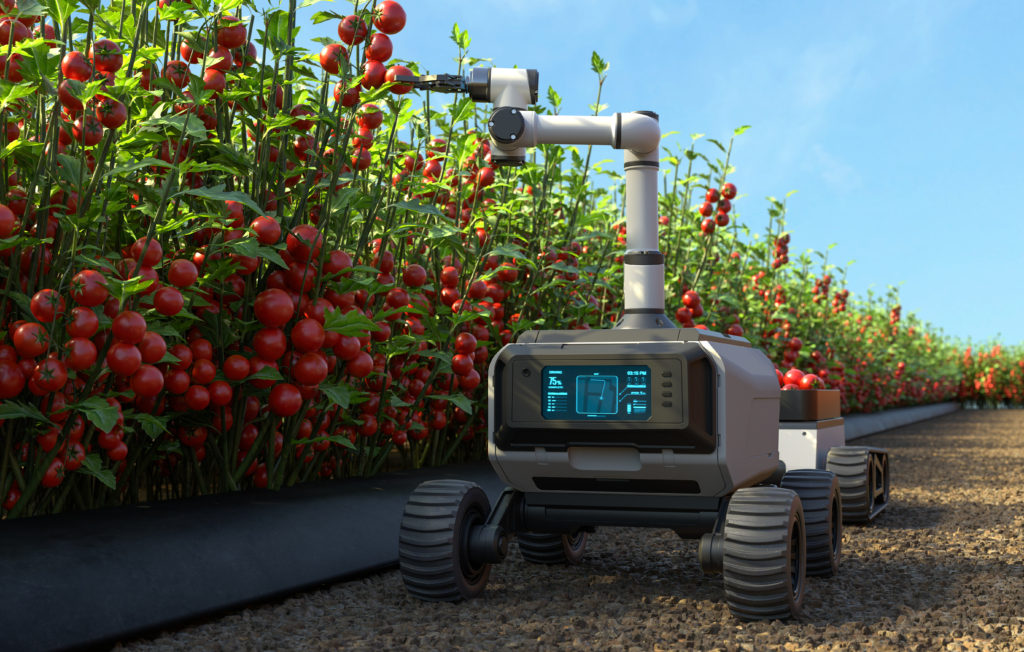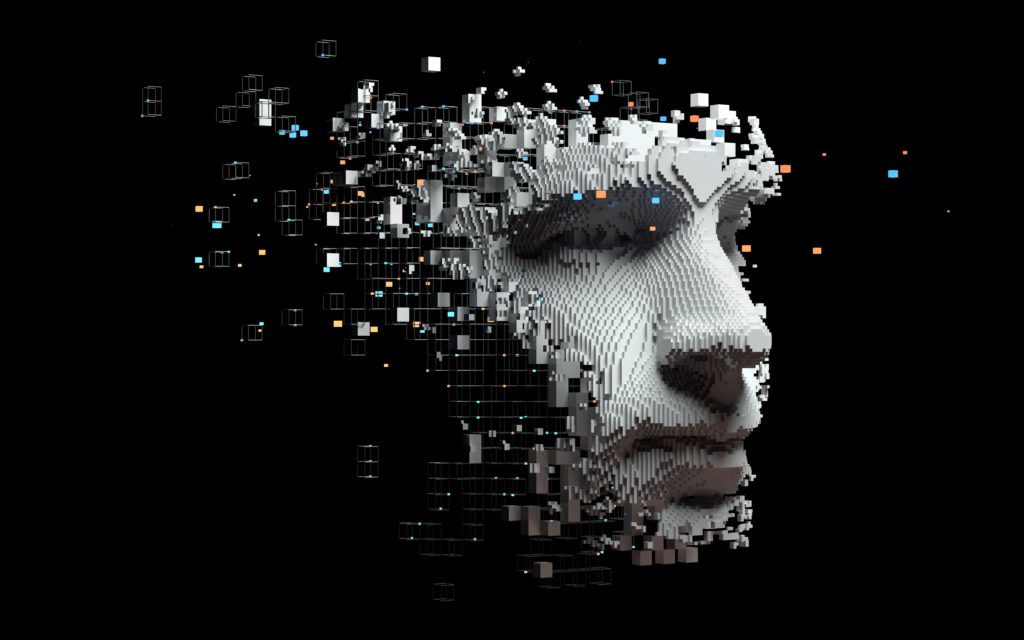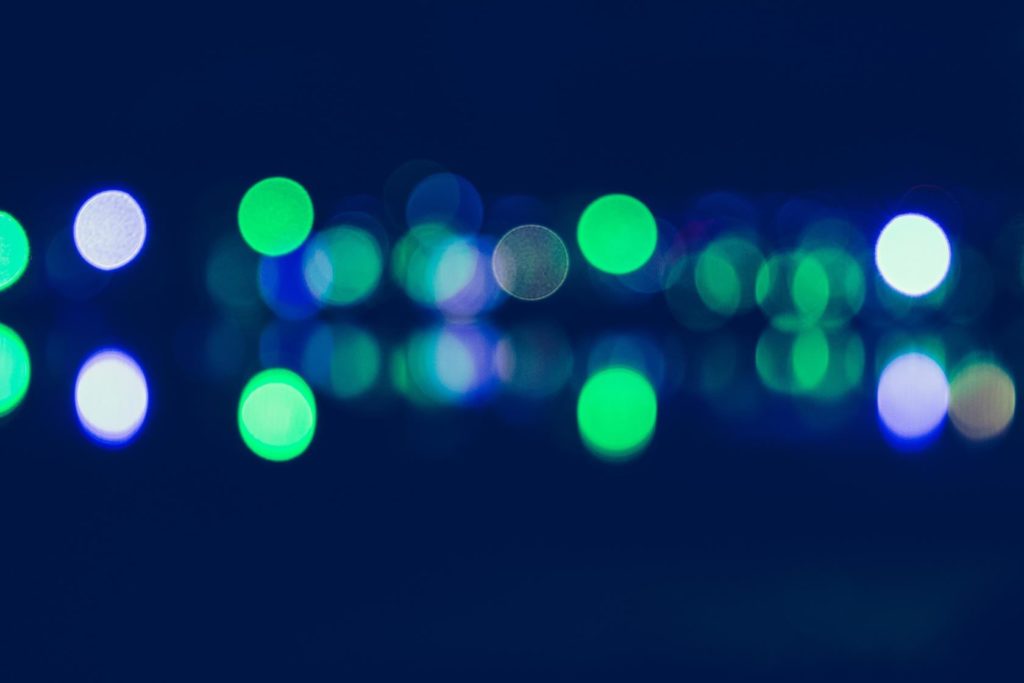Article
AI in Agriculture: Innovative Opportunities to Cultivate the Future
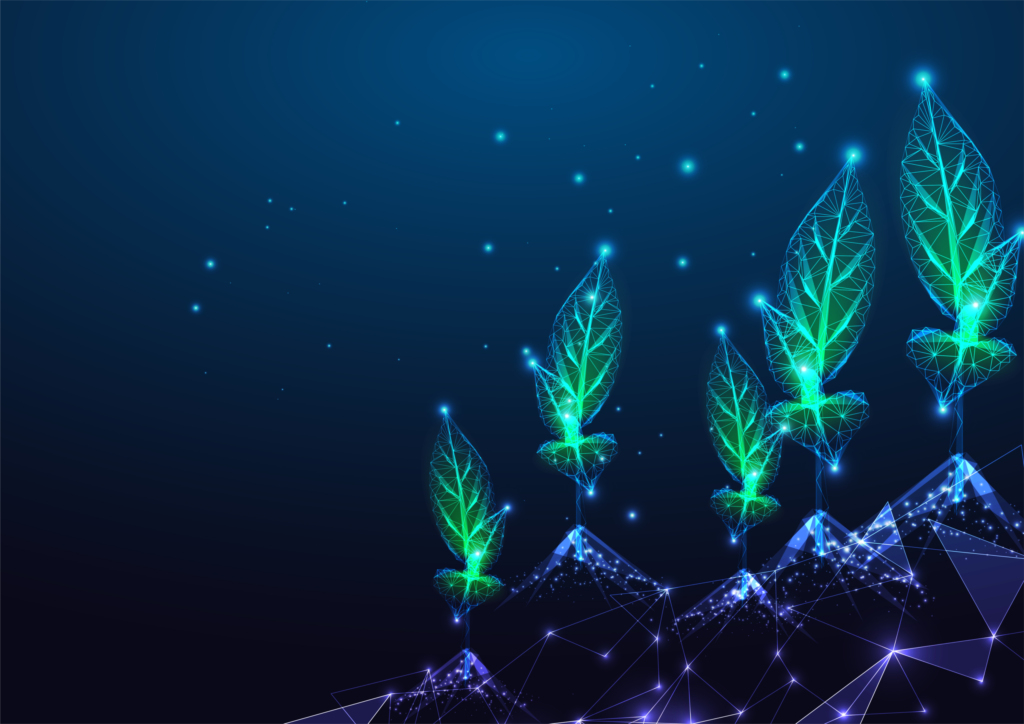
What’s the current state of the agriculture industry?
Modern farmers, and the agriculture industry generally, are grappling with change. Considering use cases of AI in agriculture is at top of mind for many.
I work remotely for Fresh from Walla Walla––an agricultural community in Eastern Washington––and I’ve had the experience of seeing the challenges farmers, farms, and smallholders face from up close. Climate change, unpredictable weather patterns, and extreme temperatures adversely affect crop yields and threaten profitability. Embracing new technologies and implementing sustainable practices is vital to navigating larger economic factors, in addition to facing a wide range of workforce challenges. But getting up-and-running with a new approach to an ages-old science isn’t a simple task.
Still, consideration of new ways to approach the ancient practice of cultivating the earth to feed its inhabitants is vital, and for many in the industry, the transition is already in motion.
To grasp where things stand today, it helps to consider where agriculture started. A National Geographic article cites “The Farming Revolution” as the initial genesis:
“Taking root around 12,000 years ago, agriculture triggered a change in society and the way in which people lived [ . . . ] Traditional hunter-gatherer lifestyles, followed by humans since their evolution, were swept aside in favor of permanent settlements and a reliable food supply. Out of agriculture, cities and civilizations grew, and because crops and animals could now be farmed to meet demand, the global population rocketed—from some five million people 10,000 years ago, to more than seven billion today.”
What would the world, and living in it, be like without agriculture? Crop consultant and agronomist Adeel Ahmad provides a thesis in a LinkedIn post:
- Impacted nutrition: “Our diets would be limited to whatever we could forage or hunt in the wild. This would likely lead to malnutrition and a lack of diversity in our diets.”
- Less sophisticated civilizations: “Without agriculture, human society would likely remain in a more primitive state, with small, scattered communities of hunter-gatherers.”
- Diminished quality of life:“The surplus of food produced through agriculture has allowed us to devote time and resources to research and development, leading to advancements in medicine, transportation, and communication. Without this surplus, human technological progress would likely be significantly slowed or even halted altogether.”
Another byproduct of agriculture––due in large part to the benefits listed above––is an ever-increasing population. While certainly not an objectively bad thing, a large human population, more than the world could naturally sustain, presents challenges that must be addressed.
Experts project the world’s population to continue multiplying significantly in the coming years. The World Bank projects that by 2050, the global population will be nearly 10 billion, making reliable food sources even more vital. Maintaining a focus on a continued reduction of greenhouse gas emissions and building sustainable farming practices will be imperative.
So where do we go from here?
- To confront the challenges of climate change and decreased crop production?
- To make it easier to invest in and adopt new technologies?
- To implement sustainable practices that are still profitable?
- To feed a surging global population while reducing the greenhouse gas emissions responsible for some of the challenges mentioned above?
The solution to modern agricultural challenges will be nuanced (technological, economic, logistical, scientific, etc.), but artificial intelligence––as it does with every industry––presents possible solutions worth considering, solutions that have the potential to handle the scope and scale of the challenge.
AI can play in modern agriculture and the AgTech industry, is currently doing so, and will continue to do so. It’s imperative that smart, well-intentioned innovators continue thinking through how our relationship with new forms of machine intelligence can be both positive and productive.
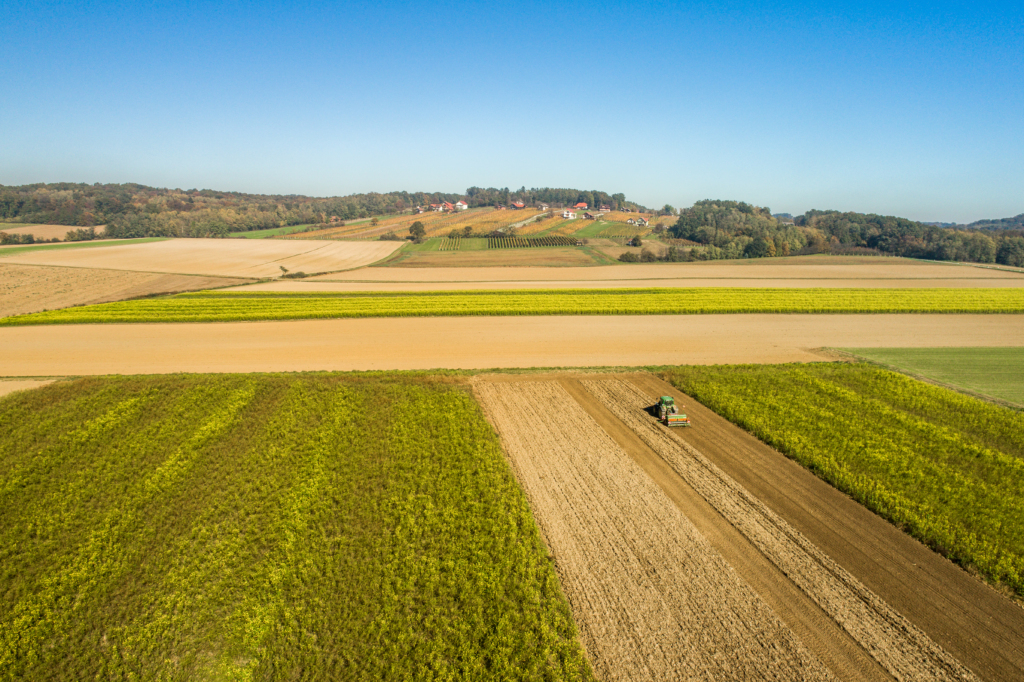
What are the specific challenges the agriculture industry is facing, and how can AI help solve agricultural problems?
The Syngenta Group lists key challenges facing agriculturalists around the sustainability of their practices––and the modern demand for it:
- The challenge of physical space: “Only 12% of the world’s land can be used for farming”
- The challenge of finite resources: “Farming uses 70% of the world’s fresh water”
- The challenge of environmental impact: “Agriculture, forestry and other land use causes 23% of greenhouse gas emissions”
The same article cites the underlying challenge that, while considering our environmental impact is vital, agriculture is still a business and a livelihood:
“Agtech is raising crop productivity, but farmers need to invest in technology, from treated seeds and crop protection products to data-analysis apps and precision spraying. While large-scale farmers may be able to afford to invest, smallholders don’t always have access to an affordable source of credit. And then farmers must learn how to best use these technologies to improve their business.
A farmer’s business decisions are complicated by global economic factors, like fluctuating commodity prices and trade issues, and the fact that a harvest can be affected by weather, insects or disease.
There’s also the question: who is going to farm in the future? As millions of people from rural areas migrate to cities each year, farmers need to inspire enough of them to remain and build a career in agriculture.”
The Sygenta Group cites additional statistics that dive a level even deeper into the challenge:
- The need for increased sustenance: 70% more food will be needed by 2050 to feed the growing population (mentioned in the previous section)
- The need to empower small-scale agriculturalists: 80% of food for the developing world is produced by smallholders (who might not have the resources to afford expensive technological solutions)
- The need to address ongoing workforce challenges: 180,000 people leave rural communities every day to live in cities (and even with technological solutions, humans are central to the agriculture industry)
This is only a small survey of the challenges facing the agricultural sector, but the larger themes account for much of the adversity modern farmers are facing:
- Finite space and finite resources for farming
- The environmental effects of agricultural practices
- The fact that farmers across the world have a range of means
- The demand for higher crop yield
- Myriad constraints that affect supply
- Infrastructural barriers (access to technology, regulations, etc.) that affect the adoption of new methods
- The need to develop solutions that, while accounting for all the challenges mentioned above, are also economically practical for farmers
What’s the current state of AI in agriculture? What role can AI play in the future of agriculture?
Across a range of industries, AI presents a potentially game-changing solution to address obstacles. The same is true in the agricultural sector.
As per the National Institute of Food and Agriculture, AI and ML-enabled sensor systems for soil and crop monitoring, autonomous robots for labor intensive work, and intelligent systems to streamline operations stand as powerful examples.
The sections that follow provide a deeper dive into examples of AI in agriculture, paired with information and perspectives on how AI in agriculture could look in the future.
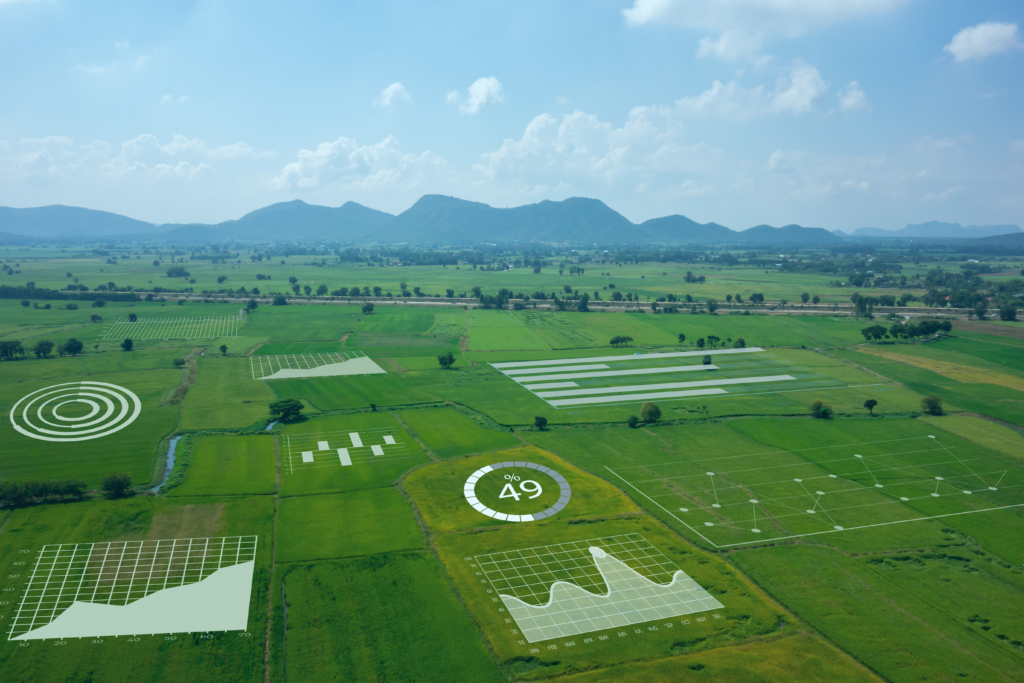
Data-driven decision-making and predictive analytics
One of the things I’ve been most intrigued by regarding Generative AI, robotic process automation (RPA), and other applications of artificial intelligence is improved data-driven decision making and predictive analytics.
This has the potential to improve the experience of farming as well.
Precision Farming: A powerful farm management strategy
CropForLife’s article on precision farming cites a key benefit of precision farming as reducing “complexity and [performing] the necessary tasks that only a human could perform.”
With precision farming, historically manual tasks can be automated to not only reduce dull, dirty, and dangerous work but also expedite time-intensive tasks that machines are well-equipped to tackle.
In precision farming, data (from various sources like soil sensors, drones, satellite imagery, and GPS technology) is used to monitor crop health, soil conditions, and weather patterns. This rich body of data enables farmers to make more accurate decisions about when to plant, fertilize, water, and harvest crops. Precision farming offers a reliable strategy to maximize yield while minimizing waste, a direct benefit to farmers across the spectrum.
Predictive Analytics: A method to improve crop yield
In A CNN-RNN Framework for Crop Yield Prediction, the researchers acknowledge that crop yield prediction is “extremely challenging due to its dependence on multiple factors such as crop genotype, environmental factors, management practices, and their interactions.” Crop yield prediction isn’t one-size-fits-all––the approach of farmers in the American midwest, farmers in Japan, and farmers in South American will look substantially different.
But the research shows that convolutional neural networks (CNNs), recurrent neural networks (RNNs), random forest (RF), deep fully connected neural networks (DFNN), and LASSO can be used to automate the general prediction process.
The outcome of implementing these forms of AI in agriculture is automated insights––preparing farmers and stakeholders to understand market demands, anticipate price fluctuations, and respond proactively. By analyzing historical data along with real-time field data, predictive models provide an estimate of the quantity and quality of the crop yield for a particular season, allowing farmers to plan and strategize.
Supply Chain Optimization: Streamlining production and distribution
Lucky Griffin discusses the benefits of an AI-optimized supply chain––for farmers, consumers, and distributors––in a AI in Agricultural Supply Chain Management:
“AI can analyze multiple variables, including transportation routes, vehicle capacities, weather conditions, and delivery schedules, to optimize the movement of agricultural products from farm to market. By minimizing transportation costs, reducing delivery times, and optimizing inventory management, AI improves overall supply chain efficiency and reduces waste. This benefits both farmers and consumers by ensuring fresh produce reaches the market promptly.”
Paired with predictive models that forecast the demand for different crops, every part of the supply chain can be optimized to streamline operations and minimize waste.
Intelligent Adaptation to Climate Change: Beneficial to farms, consumers, and the environment
Claudia Ringler, Director of Natural Resources and Resilience (NRR) at the International Food Policy Research Institute, cited the challenge of “increases in global surface air temperature [ . . . ] affecting not only crop yields but also crops’ nutritional value” in BBC’s “The Climate Question” podcast.
Predictive analytics can help farmers adapt to climate change by forecasting long-term weather patterns and their likely impact on crops. With data-driven decision making, farmers can make decisions about what crops to plant, when to plant them, or pivot to different crops than they’ve historically farmed if the data suggests doing so.
Resource Management: Optimized farm operations and improved worker experience
Apps like Harvust streamline HR for farms, making onboarding, training, and communication much simpler. Managing human workers––a vital resource for farms––is essential.
AI provides the ability to further automate HR-focused software platforms. Managing resources like energy, water, and fertilizers is easier via AI as well––insights about fuel use saves money and makes operations more sustainable, optimized irrigation reduces water usage, and data about crop health can decrease fertilizer use, all of which carry financial and environmental benefits. Artificial intelligence agriculture will certainly manifest itself in software used for farm operations.
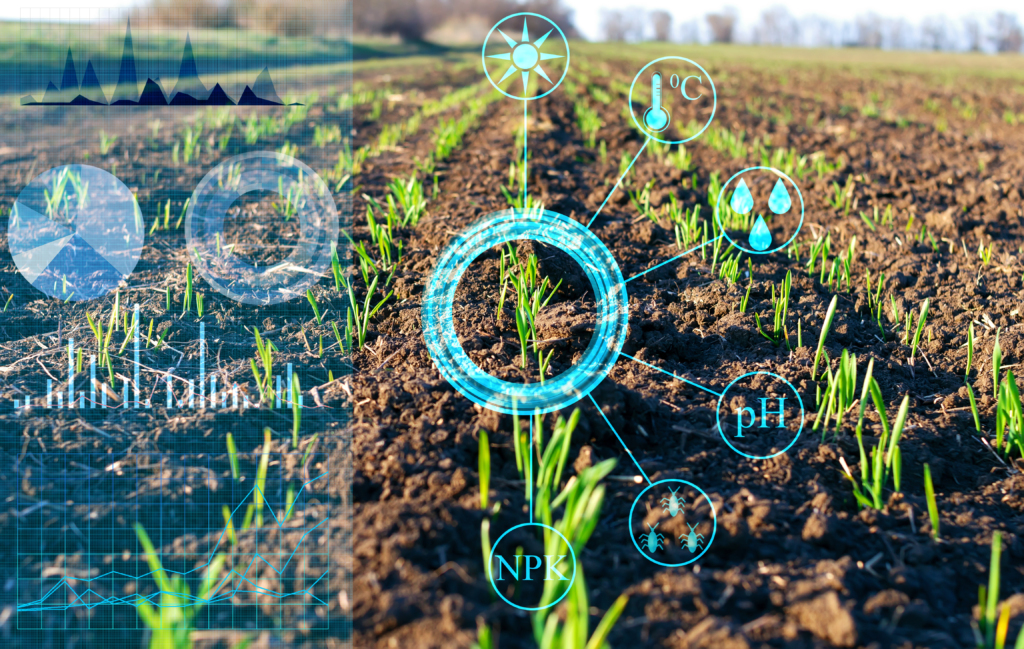
Autonomous operations, automated sensing, and remote monitoring
The ability to remotely operate farm operations and workflows––thanks to sensor packages and IoT infrastructure––is vital to success in modern agriculture. Technologies used to do so include drones, satellites, and ground-based sensors that collect data and present it back in a usable way for farmers.
Detecting Pests and Crop Disease: Tools to mitigate global crop loss
Research shows that “Agricultural pests cause between 20 and 40 percent loss of global crop production every year,” and computer scientists have investigated how machine learning techniques like Support Vector Machine (SVM), Decision Tree (DT), Naïve Bayes (NB), Long Short-Term Memory (LSTM), Deep Convolutional Neural Network (DCNN), and Deep Belief Network (DBN) can be used to mitigate the loss through proactive pest detection.
Sophisticated remote sensing technology––enabled via computer vision, spectral band analysis, and thermal imaging––can also detect changes in plant health before they’re visible to the human eye. The key is proactivity. Without concrete insights, many of which can be provided by AI, taking meaningful action is difficult (if not impossible).
Detecting Water Stress: Using 70% of the world’s fresh water (or less) more intelligently
The AI Institute for Food Systems at UC Davis is undertaking a project to develop “an AI-enabled framework for near real-time monitoring and a prediction that are generalizable across many specialty crops,” with the aim of transforming “US food systems by innovating AI technology for a more sustainable food production system.” Decreasing water stress is a key objective.
This is vital because while water stress sensing is essential to ensure environmental sustainability, it can be used to improve plant health, optimize crop yield, and implement precision irrigation––all of which carry economic benefits for farmers.
Wireless Sensors to Environmental Conditions: Detecting challenges faster
From soil moisture to predicted rainfall, wind speeds, leaf wetness, and evapotranspiration, Onset’s wireless sensor networks provide sub-GHz wireless signals, mesh networks, and complex sensor packages that can be configured for any farm. Sensor infrastructure like Onset’s, integrated with AI to automate data collection and produce actionable insights, make the process of dealing with detected challenges easier.
Fresh assists clients with RF engineering services to make both custom and off-the-shell wireless sensor packages more performant and at a better cost (due to an established, yet customizable engineering process)––it’s a clear-cut example of how we’re helping AgriTech clients currently.
Automating Soil Quality Assessment: Visualizing the invisible
An article from AZo Robotics discusses a Brazilian agricultural startup––Inceres––who has “developed an app that can predict soil quality and fertility based on soil application and nutrient uptake. The analysis is based on data on the chemical composition of the soil, weather conditions, crop types, and satellite images showing plant growth rates.”
The authors acknowledge the data challenge (how to handle the required quantity and quality to develop functional AI and ML algorithms) as a roadblock, but the ability to manage soil health at scale via AI and ML presents a significant opportunity for farmers.
Implementing Intelligent Control Systems: Machines capable of reasoning and acting autonomously
Intelligent control systems adapt to environmental changes, learn from new data, and perform complex tasks via neural networks, fuzzy logic, and reinforcement learning. In agriculture, use cases for intelligent control systems include automated irrigation control, automated harvesting, precision farming, automated climate control, and much more.
Despite their utility, creating intelligent control systems is a difficult task for those working in agriculture or any other field. In collaboration with Microsoft, Fresh engineers tackled the challenge to “democratize” the development process by building a tool that allows non-data scientists to design intelligent control systems in a less time-consuming, less-expensive, and less-technical way.
Project Bonsai enables decision-makers to build and deploy agriculture-specific intelligent control systems to automate machine and fleet calibration, build more efficient energy storage infrastructure, and enable remote motion control for autonomous equipment. In parallel with Project Bonsai, the Fresh team created the 2022 Red Dot award-winning “Moab,” a ball balancing robot that allows engineers from various backgrounds to experiment with Bonsai technology, simulate scenarios, and master the skills needed to build and implement intelligent control systems for their use case.
Building a farm-ready AI solution requires extensive technical work. With a device like Moab and a reinforcement learning (RL) tool like Bonsai, decision-makers can experiment with AI and explore the possibilities before full-scale development begins.
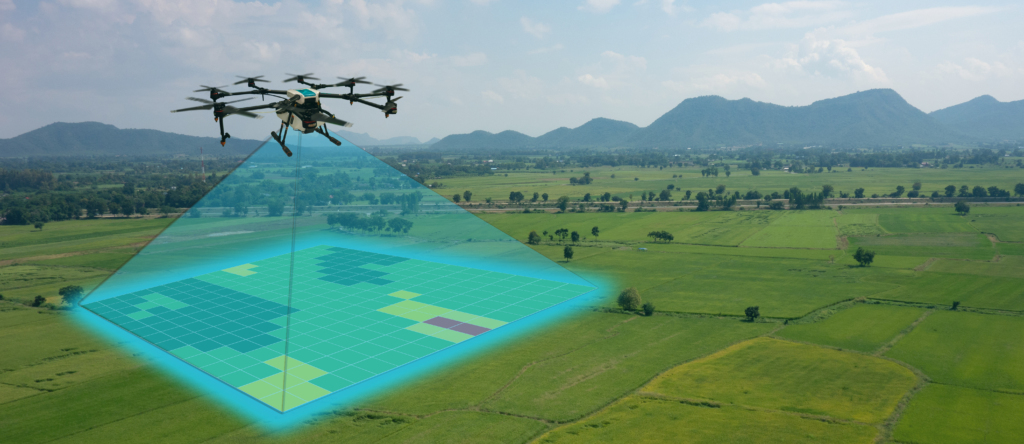
Autonomous machinery for enhanced efficiency
Autonomous machinery, drones, and robotic fleets will be central to tackling the various workforce challenges related to agriculture. Listed below are some of the ways these technologies can be applied to enhance efficiency, increase productivity, and allow farmers to proactively address labor challenges.
Autonomous Tractors and Harvesters: Machines capable of working around the clock
Self-driving tractors and harvesters can work extensive hours, thus increasing the productivity of farm operations. Intelligent IoT devices and networks improved via AI will play an essential role in designating pre-planned routes, helping vehicles avoid obstacles, and carrying out high-precision tasks like plowing, seeding, and harvesting.
To solve a similar workforce challenge in the construction industry, we created ROC, a cloud-based application that allows operators to easily schedule vehicle missions, monitor performance in real-time, edit site layouts, and manage other fleet operations.
We’ve also developed Harmony, an Integration Platform as a Service (Ipaas) tool which provides management, navigation, and coordination tools for fleets of robots. The Orion platform, designed for indoor operation without GPS, can also be extended to outdoor operation, equipped with the same tools for collision avoidance which is vital on farms where humans and machines must work in collaboration, with safety at top of mind.
Drone Monitoring: Getting a bird’s eye view of farm operations
AI-enabled drones are capable of monitoring crop health, analyzing soil, and monitoring livestock, and much more. In a LinkedIn post, ClearSpot.ai cites cost reduction, reduced environmental impact, and early intervention as positive outcomes. Their website dives deeper into their software, which, when integrated with UAVs (Unmanned Aerial Vehicles), leverages advanced sensors to collect high-resolution data for detailed mapping and modeling. The collected data is processed with AI and ML to give agriculturalists real-time alerts so they can make confident decisions based on evidence.
Across a range of agricultural use cases, AI-enabled drones and other UAVs use multispectral sensors to assess and monitor crop health and identify other issues. Because drones can cover large areas of land quickly, farmers who use drones can accelerate their response time.
Precision Irrigation: Using a finite resource with greater accuracy
Nelson Irrigation is a leader in the irrigation field, providing solutions for drought-prone areas across the US. Tools like PivotMapper build toward Nelson Irrigation’s commitment to sustainability, acting as a way to deliver value to their clients and save energy and resources throughout the industry as a whole.
As tools like those created by Nelson Irrigation are paired with AI-enabled drones and other intelligent technologies, they’ll become even more powerful, enabling pin-point precision agriculture and delivering water precisely where and when it’s needed.
Accurate Planting, Seeding, and Weeding: Unprecedented insights into land and crops & tools for autonomous crop care
John Deere’s AI-based precision agriculture tools give farmers insight into their land at the seed level. Their other AI agriculture initiatives help machines distinguish between weeds and crops, operate autonomous vehicles, and connect customers to data-based insights about all of the above.
Paired with drones and UAVs capable of planting seeds after insights are gathered and plans are formulated, these innovative AI solutions have the potential to plant and seed with an unprecedented level of precision.
Seattle-based Carbon Robotics’s autonomous LaserWeeder enables “precision weed control through an array of high-powered lasers regardless of weather or time of day. LaserWeeding boosts crop yield, cuts farming costs, and supports sustainable farming.”
The LaserWeeder’s tech stack is a powerful example of best-in-class tools applies to AI in agriculture:
- “Powered by Nvidia GPUs”
- “42 High-resolution cameras targeting weeds”
- “Deep-learning-based computer vision models”
24/7 operations. Pin-point accuracy of weed removal. A flexible platform for different farms and 40+ crops. It isn’t hyperbole to say that Carbon Robotics is a prime example of the future of AI in agriculture.
Automated Data Collection: Using AMRs and UAVs to gather information at scale
Autonomous machinery and drones are excellent tools for collecting data on various aspects of a farm’s operation, and the data can be fed into a farm management system to support data-driven decision making.
Venture Beat reports on how precision farming––smarter farming––uses “remote and smart sensors, drones, GPS sensors and guidance technologies [that enable farms to] use less water, land, herbicides and insecticides.” They also cite research highlighting the anticipated growth of the precision farming market, to $15.6 billion by 2030 from $8.5 billion in 2022.
The article also discusses the example of Solinftec, a global leader in AI-based SaaS (software as a service) tools for agriculture. Solfintec’s solution, ALICE AI, goes beyond raw data to helping farmers make decisions in the moment about what’s best for their crops.
With autonomous robots like Solix, powered by ALICE AI, farmers not only have the ability to analyze fields, but also act on insights to maintain them.
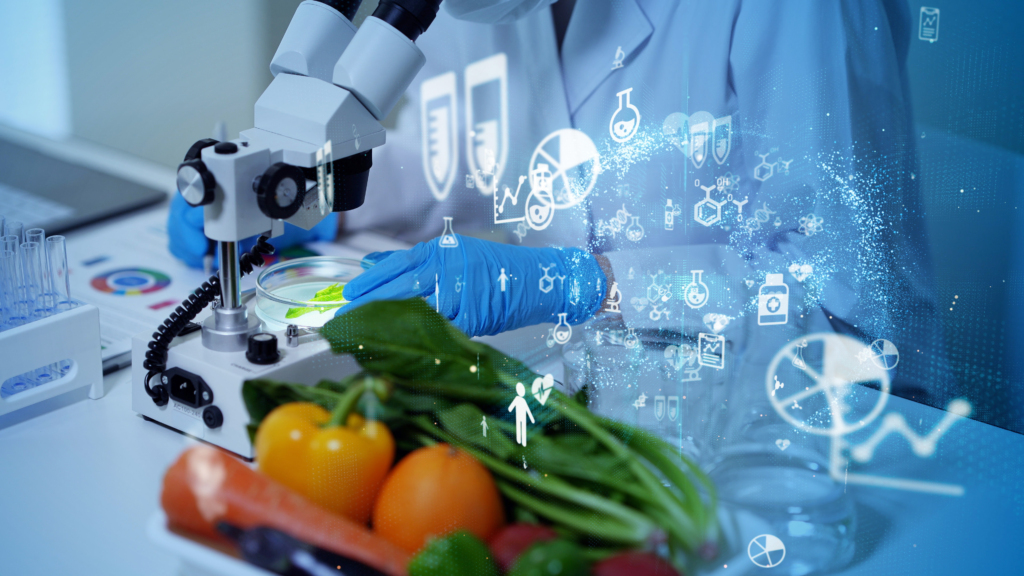
AI-powered crop breeding and genetic improvement
Artificial intelligence can play a key role in crop breeding and genetic improvement as well, accelerating the process of developing improved crop varieties and overcoming challenges related to climate change, pests, and plant disease.
Genomic Selection: Breeding more resistant crops
Authors for Frontiers in Artificial Intelligence cite research about how accurate genomic selection is vital to overcoming the challenge of food production: “Selection of varieties with desired phenotypes from a collection of varieties of a crop is essential to breeders, as the right selection can lead to improvements such as drought resistance, biotic and abiotic stress resistance, yield improvement and disease resistance.”
AI, ML, and Deep Learning models can be used to analyze massive amounts of genomic data and predict the best plants for breeding, accelerating what would otherwise be a prohibitively time-intensive process.
Phenotypic Analysis: Computer vision to observe plant traits
Researchers from Frontiers in Plant Science discuss CropQuant-Air, “an AI-powered software system that combines state-of-the-art deep learning (DL) models and image processing algorithms to enable the detection of wheat spikes and phenotypic analysis using wheat canopy images acquired by low-cost drones.”
Vision-based AI––“object detection, classification, semantic segmentation, and pattern recognition”––has promising potential for the field of aerial phenotyping. Leveraging AI and ML to analyze plant phenotypes (“observable physical traits”), images captured by drones or ground-based sensors can help breeders identify subtle patterns they might have otherwise missed, insights which can be used to grow healthier plants.Fresh has done extensive work in developing robot perception for non-ideal environments and creating robust perception libraries, both of which can be used for AI agriculture use cases.
Gene Editing: Creating hardy varieties to feed the world
Gene editing is possible due to CRISPR-CAS9 (clustered regularly interspaced short palindromic repeats and CRISPR-associated protein 9!) “gene scissors.”
The concept sounds complex––it is––but the use case is both practical and exciting. By putting gene editing into practice, scientists can modify plant genes, develop climate-resistant varieties, decrease resources needed for cultivating, and deliver higher yields to feed the world’s growing population.
AI and agriculture can go hand-in-hand. Tangentially, while many of the current use cases of AI don’t directly correlate to “tech for good,” the above article leads to exciting use cases related to AI and sustainability. Follow the links below to learn more about:
- Rainforest Connection, a company using ML algorithms to curb illegal deforestation
- How AI is improving future technological systems to mitigate the climate crisis
- Rouxcel Technology, creators of AI-enabled “Rhino Collars” that monitor behavior, identify incident location via GPS, and prevent poaching
- Agvolution, an “AI for climate” solution that can be integrated via API into an existing system
- Open Climate Fix, a “a non-profit product lab totally focused on reducing greenhouse gas emissions as rapidly as possible” via rapid prototyping, testing, and iteration
Disease Resistance: Understanding plant pathology at a deeper level
In an interview with plant pathologist Karen Garrett, of the Garrett Lab and the University of Florida, authors from AnalystNews quote her perspective on AI used for plant disease resistance and crop resiliency: “AI can help by making better tools for crop surveillance, designing better robots to deliver pesticides or harvest, and better software to help in breeding for traits like disease resistance and drought tolerance.”
Essential use cases for AI related to plant pathology include identifying patterns in genetic and phenotypic data related to disease resistance, which helps breeders develop crops that are more resilient.
Trait Discovery: A gateway to developing ideal crop varieties
Trait discovery––the size and shape of plants, their resiliency to various environmental conditions, etc.––allows agronomists to develop crops that can survive adversity and help combat global hunger crises. AI is already being used to identify traits so that breeders can develop crops better suited to handle climate conditions, as reported by Axios’s Allison Snyder.
Artificial intelligence and machine learning models are vital to the process of identifying desirable traits and developing new crop varieties.
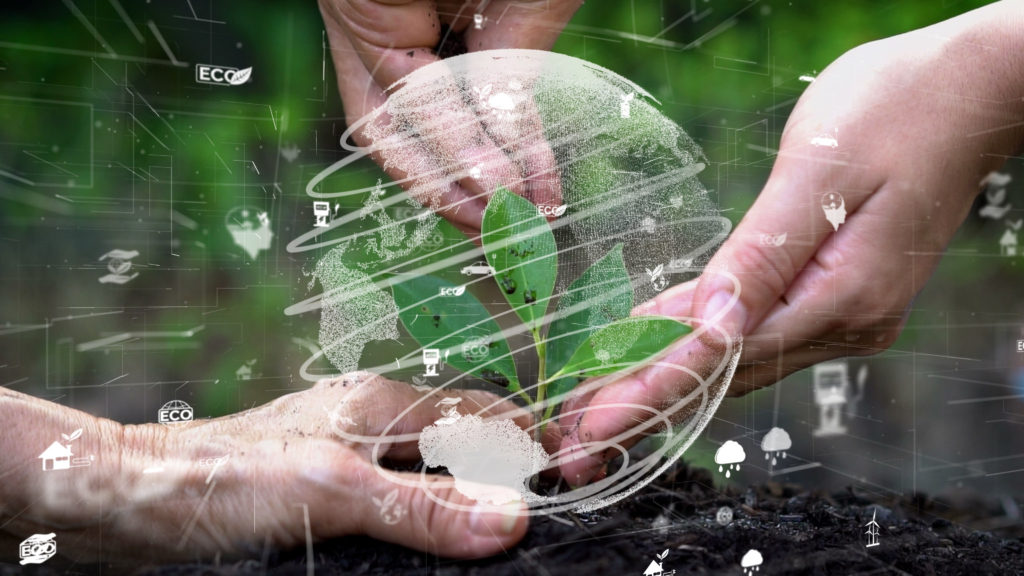
AI in Agriculture will be part of our future. How do we address concerns about AI and the issue of trust?
Step 1: Adopt a framework to create transparency
IBM has a powerful article on the importance of trust, and key initiatives agriculture companies (and third-parties that serve them) can take are clearly laid out privacy policies, transparency terms of services, and documentation that is easy to access and simple to understand for users whose domain is not AI.
But why does it even matter if the value of AI is so clear-cut? Consider the audience.
- How do we reach farmers, many of whom live in rural areas and are less technical, and convince them that AI is the solution to their problems?
- How do we appeal to environmentalists who are already tackling a host of challenges created by technology, and convince them that new technology is what they need to make even better progress?
- How do we connect with blue-collar individuals who are central to any supply chain––even an automated one––who may historically look askance at technology that in theory could replace their livelihoods?
- How do we communicate with food conscious individuals who prefer naturopathic food sources cultivated by more traditional means?
- How do we put farm workers at ease, those interested in protecting their data for various reasons?
It starts with trust. Capturing the hearts and minds of all the audiences above––and the dozens of others who are skeptical of AI, ML, and general machine intelligence––is unlikely. But the effort is important if the solutions mentioned in the previous sections are to be brought to scale.
Below is a list of approaches organizations can take to building trust with their target audience, and regulatory bodies, with regard to AI initiatives.
Data privacy and protection
Security of data is vital. While agriculture isn’t historically “digital-first,” AgriTech companies are, and it’s vital to invest in strong cybersecurity infrastructure to safeguard user and company data.
Approaches such as integrating encryption technologies, secure data transfer, intrusion detection systems, and regular vulnerability assessments are central to the effort, as is compliance with data privacy regulations like GDPR, HIPAA, and local data protection laws.
Regulatory compliance should be well-documented. Non-compliance can lead to significant fines, loss of trust, and damage to your company’s reputation, which is dangerous in the nascent world of AI.
Education and awareness
Educating users about AI and its benefits is a vital effort; educating customers about a company’s security measures and the potential risks is equally important.
Farmers, environmentalists, blue-collar individuals, food conscious audiences, farm workers, or anyone else affected by AI will be more likely to consider a solution if it’s well-explained and clearly laid out.
There are numerous benefits to the solutions mentioned throughout this post, but without companies that take care to keep their target audience in the loop about what’s under the hood, go-to-market initiatives will fall flat.
Usability and accessibility
Some of us are pure technologists, some of us are pure humanists, most of us meet somewhere in the middle. But users of technology are human, and so, digital systems should be designed with a wide range of human needs in mind. Not only is doing so essential for meeting accessibility standards, but also, for building trust with a wide base of users.
This is true for systems built with AI as well. Even if a system runs on its own, creating dashboards that allow non-technical users to access and interact with the data is vital. Making information about how AI is used available––and making that information accessible for non-technical users––is equally important.
As you design your platform, create onboarding for new users, and compile documentation about the systems in place, consider (as applicable):
AI ethics and fairness
Ensuring that the AI and ML algorithms you use don’t exacerbate biases is vital. Taking measures to ensure that AI tools are designed and used responsibly is essential to avoiding negative impacts.
Developing ethics and fairness frameworks from scratch is difficult. Fortunately, there are great examples provided by forward-thinking organizations working in the space that provide a starting point.
- IBM’s Explainable AI: “a set of processes and methods that allows human users to comprehend and trust the results and output created by machine learning algorithms.”
- University of Helsinki’s guide to the Ethics of AI: what AI ethics is, what can and can’t be done to develop ethical models, and how to approach AI ethics proactively
- The Intelligence Community’s AI Ethics Framework: Designed specifically for the intelligence community, the framework still includes practical measures that any organization can take
- UNESCO’s Ethics of Artificial Intelligence: A framework from an agency of the United Nations with core values, recommendations, and powerful principles to consider.
Step 2: Develop an implementation strategy to put the framework into action
The Harvard Business Review argues that ethical frameworks alone aren’t enough; that a concrete implementation strategy is important. The author cites AlgorithmWatch’s research into the fact that, while well-meaning, frameworks lack enforcement mechanisms and are general sets of recommendations––a starting point, but not a holistic solution to the challenges AI presents.
In How to Put AI Ethics into Practice at Your Company, authors from Inc. recommend placing AI in a strategic context (specific, measurable, objective-driven) and establishing a concrete governance approach (rules and practices for accountability). Getting help from an outside party in developing such a strategy is vital––and it comes back to the central issue of earning and maintaining user trust if and when an agricultural company or farm explores AI as a solution to its challenges.
In summary, consider:
- Spending time to truly understand your user base and their openness to AI in agriculture
- Educate them about your approach and the value it delivers
- Prioritize human-centered design to make complex systems usable
- Create or adopt a framework for AI ethics and fairness
- Design an implementation strategy to put the aforementioned framework into action
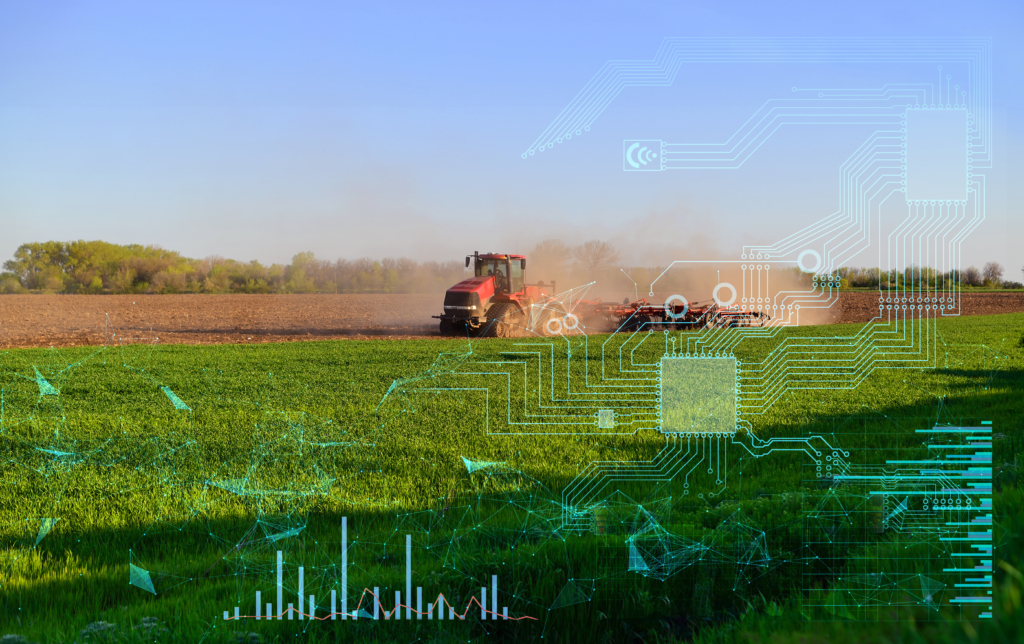
The future prospects of AI in agriculture
The use cases listed throughout this post are just the tip of the iceberg. Improving crop viability and decreasing waste are important, but occupational safety, dairy farming, rural agriculture are also connected to the industry––the possible use cases for technology that improves the lives and livelihoods of people working in agriculture are nearly limitless.
Is AI right for your use case or the use case of the client you’re serving? It might not be. That’s why strategic innovation is vital; that is, starting from Phase Zero to truly understand the underlying challenge at play in order to develop a solution that solves it.
Beyond AI, it’s essential to continue exploring how to bridge the gap between technologists and farmers. The industry as a whole is trending toward a more tech-centric future, but communication remains vital in order to promote transparency and establish trust.
There’s a bright future ahead for AI in agriculture. Where AI brings the most value remains to be seen, but it will without question play a role in solving the biggest challenges facing modern farmers and the charge they face––feeding the world.




